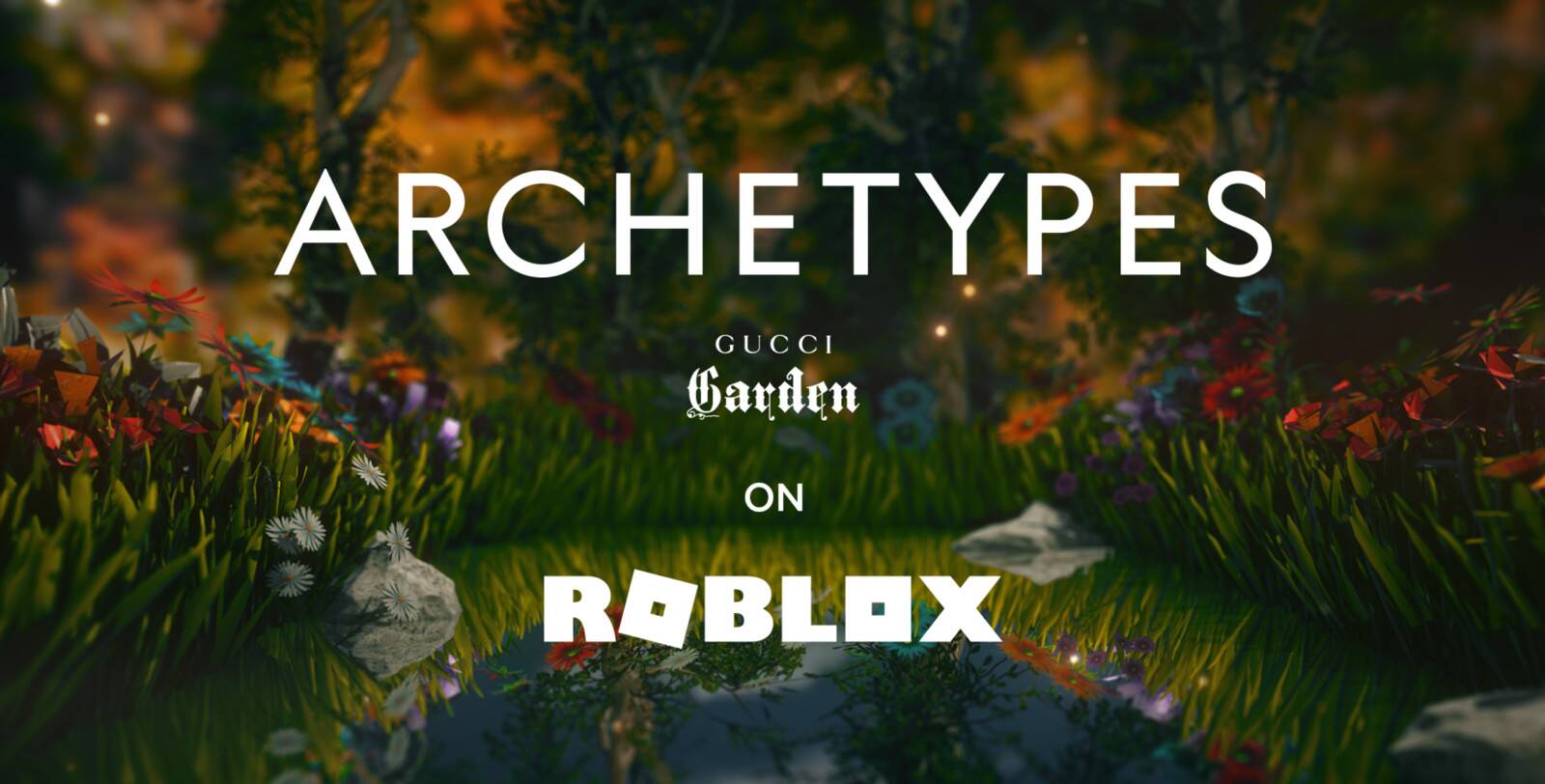
In honor of Gucci’s 100th Anniversary, the iconic brand has launched Garden Archetypes, an immersive experience in Florence that recreates work from Creative Director Alessandro Michele’s most ambitious campaigns during his 6 years running the luxury fashion house.
While Florentines can take part in the immersive installation IRL, the rest of the world can access the event in a totally different way: through the virtual Gucci Garden experience in Roblox. And this virtual space isn’t some throwaway gimmick — it offers a unique experience only possible through a digital platform — giving us some clues about fashion’s future in cyberspace.
Roblox is an online game platform where players can gather together, attend events, and play games within the game that are built by users. It’s a major name in the creator economy — after IPOing in April, the company is now valued over $40 billion.
While many may be unfamiliar with the platform, it is wildly popular among the young people; over half of the kids in the U.S. are playing it, following a surge of growth during the pandemic.
Virtually there: In Roblox, users play as custom avatars. When they enter the Gucci Garden experience, though, these are replaced with neutral mannequins that don’t exhibit clear age or gender. As they progress through the Garden, these blank-slate avatars absorb different fragments from each room. By the end of the experience, they will have generated a one-of-a-kind avatar based on these different elements — completely adorned in Gucci-ness.
It’s a journey meant to symbolize Gucci’s vision of “archetypes,” but all affectation aside, this experience signals a shift in reality occurring right before our eyes.
Why does this matter though? Digital fashion has been on the rise for the past few years, but took off during the pandemic. Gucci has experimented with other virtual offerings since last year, such as $9-12 virtual sneakers that could only be “worn” on platforms like Roblox — or in real life through augmented reality (AR).
Other brands, like The Fabricant, have staked their claim in digital fashion’s future by only offering digital items, wasting nothing but data and exploiting nothing but imagination.
You may be asking yourself why anybody would pay for clothes they can’t even wear, but according to The Fabricant’s CEO Kerry Murphy, digital fashion opens up avenues of expression not possible in the physical realm.
“The real value of 3D is that it enables us to be way more creative and to create situations that we haven’t previously seen, which allows for this new aesthetic language; a new way of expressing our creativity that really speaks to young, digitally savvy audiences,” Murphy told Vogue Business.
In fully virtual experiences, like Roblox’s Gucci Garden, this new aesthetic language is clearest in how avatars literally become fashion objects. But through visual effects, and ultimately AR, it is also becoming part of the real world.
With digital fashion, you can “wear” clothes that are made of fabrics that don’t exist, or that totally defy the laws of physics. Because the final output for this content will be social media platforms, it doesn’t actually matter if you’re wearing a piece of clothing when the photograph is taken — only that it is realistically applied to your photos and videos by the time they appear on Instagram.
This linking of identity across multiple digital spaces with representation in the real world (through physical shoes and AR overlays of the VXL Portrait) may be one of the earliest efforts of its kind, but it’s not hard to imagine how it could catch on with brands in the future.
While NFTs and blockchain technologies are under scrutiny for their environmental toll, it’s also important to note how digital fashion stands to push the industry toward sustainability.
In 2020, Helsinki Fashion Week went fully digital through the “cyberspace utopia” Digital Village platform. HFW has emphasized sustainability since its debut in 2016, but the constraints of 2020 were a chance to specifically demonstrate the possibilities of digital sustainability in the fashion industry — along with the new realms of creativity that might arise in this experimental space.
“This experience with HFW brought to me … a new way to create forms with no limits and what you can do with it,” Finnish designer Paula Malleus told WWD of her experience at HFW. “It freed me from the restriction of how things have to be made, and how forms are to be created.”
Last year, much of the world was scrambling to figure out ways to translate live experiences in digital contexts, and amid that messy, chaotic process, new forms of connection emerged. A recent study from NRG indicates that those aren’t going to disappear as we enter a newly vaccinated world. Instead, we have a new relationship to virtual events. It stands to reason that if we’re going to be attending more things virtually, or taking part in virtual tie-ins to IRL experiences, we’ll want uniquely virtual ways of expressing ourselves.
Right now, the idea of digital fashion might seem a little strange, but so did Zoom backgrounds just a year ago. So if you want a glimpse of the weird, hybrid future coming our way, experiences like the Gucci Garden in Roblox might be the perfect place to start. Wear whatever you want.
Reference:
Damiani, J. (2021, May 21). Virtual Gucci and the Future of Digital Fashion. Freethink. https://www.freethink.com/articles/digital-fashion.
The Gucci Garden Experience Lands on Roblox. Roblox Blog. (2021, May 17). https://blog.roblox.com/2021/05/gucci-garden-experience/.
